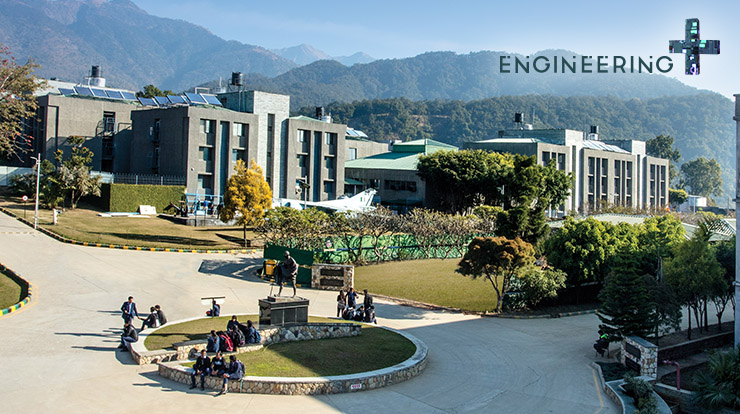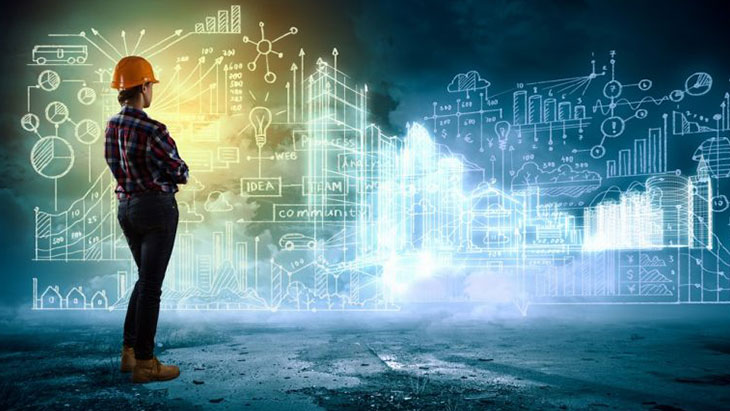The guide to building a career at NASA
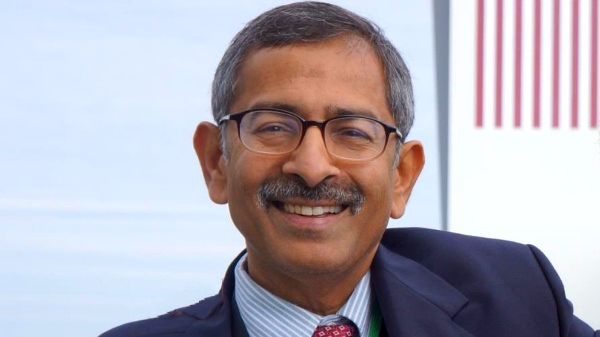
In a UPES web talk, Dr. Ravi Margasahayam, Global Space Ambassador, John F. Kennedy Space Center, NASA talks about launching Kalpana Chawla into space, the range of careers after aerospace engineering, and why earth-shattering failures are central to engineering
“Poet Iqbal had once said that ‘there are worlds beyond stars’, and now you have seen them. How does it feel?” then Prime Minister of India Mr. Inder Kumar Gujral had asked astronaut Kalpana Chawla in a telephonic conversation when she was in space on the STS-107 mission.
“What you are saying does become literal here. It is like a dome of a dark sky and stars everywhere,” she had replied.
In 1997, Kalpana Chawla created history by becoming the first woman of Indian origin to fly in space. She flew aboard the Space Shuttle Columbia as a mission specialist and primary robotic arm operator. In 2001, she was selected for her second flight.
“She dared mighty things to become an astronaut,” says Dr. Ravi N. Margasahayam, Global Space Ambassador, John F. Kennedy Space Center (KSC), NASA, as he narrates the experience of launching the first Indian woman into space.
“Two journeys had started from India with a common passion of the pursuit of flight, unbeknownst to each other – mine from Mumbai and Kalpana’s from Karnal. The journey ended at the same destination – the National Aeronautics and Space Administration (NASA). She became an astronaut, and I became the astronaut maker.”
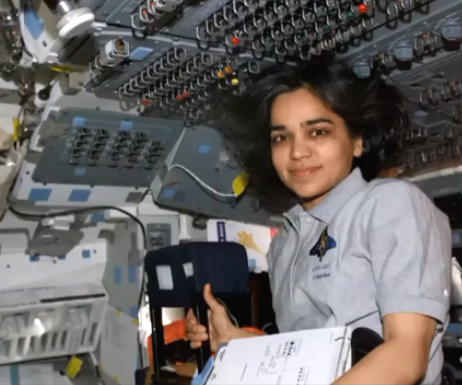
He was addressing a webinar organised by UPES on the subject ‘Launching Kalpana Chawla: In the Realm of Astronaut Maker’. Professor Gurvinder Singh Virk, Dean, School of Engineering, and Dr. Sudhir Joshi, Head, Aerospace Engineering Department, moderated the session, discussing the fundamentals of the field and what it takes to spread one’s wings as an astronaut.
“I was the first Indian to work on the NASA Moon launch pads. I met Kalpana in 1995 for the first time and in 1997 we launched her into space on STS-87. Over the years, I have had the privilege to send hundreds of astronauts in space,” says Dr. Margasahayam.
Surprisingly, it was a Hindi film that acted as a trigger and set him on the path beyond the sky. “When I saw the film ‘Sangam’, I fell in love with Raj Kapoor’s character, who was a pilot in the movie. While faith denied my dream of flying, I navigated my destiny by making the flights of others possible.”
Why go to space?
“It was the curiosity to see what is out there. Earth is the cradle of mankind, but one cannot live in the cradle forever. When Columbus sailed from the shores of Europe, he wanted to look for the world and find the best route to India. Exploration is in our DNA. And as Stephen Hawking had once said human race cannot survive the next thousand years, unless we spread into space,” says Dr. Margasahayam.
“Thousands of years ago, human beings started spreading from Africa all over the world. In the last 60 years, we have completely changed how humankind is spreading and working in space. We are a speck in the Milky Way Ocean, which comprises billions of stars. To reach even our sister galaxy Andromeda, it would take around 48 billion years,” he adds.
The ascent of space exploration
“The explosive growth of space exploration is fuelled by the intelligence, imagination, and ingenuity of engineers like us. Every 90 minutes, I can go around the whole globe with the International Space Station (ISS) and monitor it for tsunamis, earthquakes, or anything for that matter. We are but a small ripple in this colossal wave of rocket riders and astronaut makers to shape mankind’s journey in space,” says Dr. Margasahayam.
In 1957, the launch of Sputnik – the first artificial satellite, about the size of a beach ball weighing 83.6 kg – accelerated the innovations in space. “Since then, NASA has become a global leader in exploration. We have been to the Moon six times and landed on Mars eight times. We launched the Hubble Telescope, which acts as the window to the universe. Through it, we have given pictures of Earth from Moon, sent pictures from nearby as well as far away planets and seen 200 billion stars (out of the 1 billion trillion stars in the universe),” he continues.
NASA also built the ISS that weighs over half a million kilos. He explains, “We sent the parts module by module like Lego sets, costing us half a billion dollars per space shuttle launch.”
Space shuttle became the cathedral of technology through which NASA could build a palace like the ISS. There are three parts to the shuttle: The main vehicle, which looks like the orbiter, the solid rocket boosters, and the liquid fuel engine. The whole stack when integrated is almost two million kilos equivalent to the second largest building in the world (by volume).

“Every 90 minutes, I can go around the whole globe with the International Space Station (ISS) and monitor it for tsunamis, earthquakes, or anything for that matter.”
“NASA is all about making impossible, possible,” Dr. Margasahayam says. “Leonardo da Vinci had built a helicopter; today we are flying a helicopter on Mars.”
But how do you launch a rocket that has three million parts without going wrong? “Rocket launching is one of the most dangerous jobs in the world. It comes with tremendous risks of the hidden hazards of both the ground and the vacuums of space. You need the most reliable staff on the ground. You need high imagination, curiosity, intelligent direction, audacity, passion, and tenacity.”
The journey from Gateway of India to Gateway to Space
“Space shuttle riding a Boeing 747 is exactly my whole life and career in America. I have worked for Boeing, one of the best aerospace companies; now I am working for NASA, one of the best space companies in the world. In my lifetime, I have sent probes to different planets as well as wonderful telescopes like Hubble and Spitzer in the universe,” Dr. Margasahayam recounts.
His journey at KSC, NASA from 1988 has put him into various roles such as Vibroacoustic Engineer, Systems and Integration Engineer, Shuttle/ISS Safety Engineer, and now an Astronaut-Maker.
“As soon as I came from Boeing to NASA in 1989, my first job was to work on the same launch pad from where the man went to Moon. I met Neil Armstrong and Buzz Aldrin; I shook hands with them,” he reminisces.
“In my first year at NASA, we launched the Magellan Spacecraft, a robotic space probe used to map the surface of Venus using Synthetic Aperture Radar and measure the planetary gravity. The same year we launched the Ulysses to explore the polar regions of the Sun, and then we launched the Galileo Spacecraft to study Jupiter and its moons. I helped in launching the Hubble Telescope, which was deployed from the Space Shuttle Discovery on April 25, 1990. Six servicing missions took place that upgraded the telescope’s scientific instruments and operational systems. Hubble imagery has amazed people around the world and has had astronomy textbooks rewritten with its discoveries,” says Dr. Margasahayam.
However, NASA is also full of detours, deviations, and defeats. “But failure was never an option for me. I look back at the 20-year-old kid and wonder what would he be without his dreams – nothing.”
“Houston, we have had a problem!”
“I am proud of NASA. It is a story of remarkable achievements as well as earth-shattering failures. I am talking about rockets failing right after the lift-offs – Columbia, Challenger, and Apollo 1 Fire.”
Recalling the Apollo 13 malfunction, Dr. Margasahayam says, “It was a successful failure because these three men were stuck beyond the physical reach of human beings, almost 200,000 miles away from Earth but NASA engineers brought them back. I call it a success because we were able to safely bring back our astronauts; failure because the mission was to land on the moon, and that did not happen. But are we going to complain about it? No. I can always go back to the moon using knowledge and skills, but I cannot save the people once they are gone. People’s safety is always the priority.”
And safety starts with engineering excellence. “Space is a very unforgiving environment. One mistake and you are dead,” cautions Dr. Margasahayam.
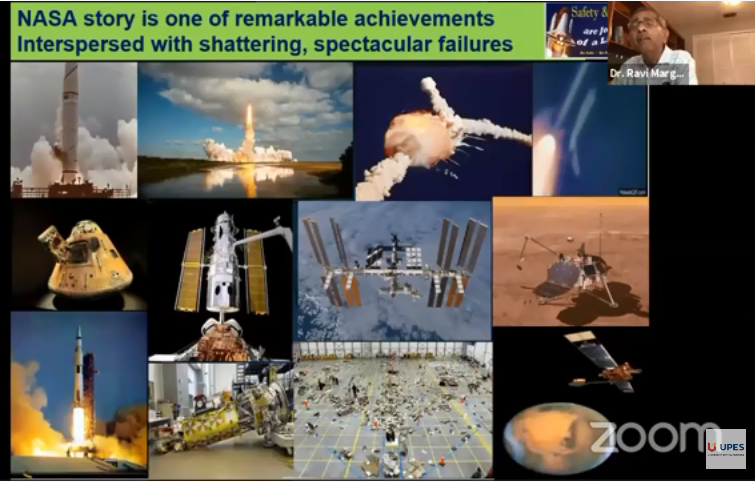
“NASA is a story of remarkable achievements and earth-shattering failures. I am talking about rockets failing right after the lift-offs – Columbia, Challenger, and Apollo 1 Fire.”
“It was a sad day when we lost the Challenger in 1986. During my time of 100 launchers, I never lost a rocket at lift-off, but we lost one during landing. We take responsibility for what happened with Kalpana Chawla and other astronauts on board Columbia on that fateful day in 2003. It is heartbreaking to see something like that. However, failure is an integral part of what we do in space as well as in life; it is central to engineering. Successful engineering is also about understanding failures. We paid a painful price, but we learned from it and kept flying to honour our fallen and their sacrifice.”
“We learnt hitting lessons from the Apollo 1 Fire killing 3 crew members, the NOAA Satellite mishap, the Hubble Space Telescope Close Call (it had spherical aberration so as soon as we put it into space, it didn’t work). We had the tenacity to go and repair it,” he adds.
Strongly advising students to not abhor themselves for their failures, he says, “One of the greatest qualities of an astronaut is curiosity. They want to go where nobody has gone before. As aspiring aerospace engineers, you must know what engineers do and also understand the failures they go through.”
“Failure is central to engineering. Every single calculation that an engineer makes is a failure calculation because, without a failure criterion, which to measure the calculated result, it is a meaningless number. Successful engineering is about understanding how things break or fail. No one wants to learn from mistakes, but we cannot learn enough from successes to go beyond the state-of-the-art.”
He continues, “We once had a woodpecker problem that created around 300 holes in our rocket, and we couldn’t launch it after Columbia’s accident so we brought it back and repaired it but we couldn’t get rid of the woodpeckers. So NASA sent emails all over the world to find a solution. We found that owls were the predators of woodpeckers, but how do you train an owl? In the end, a NASA engineer came up with the idea to make balloons filled with Helium and put them on the launch pad at many places with a picture of owl face on that. The birds ran away.”
“One time I was giving a tour to a German ambassador. He said why are there balloons on the launch pad, whose birthday is it?” Dr. Margasahayam recalls with a smile.
He says, “We all go through failures, but the important thing is to get up and learn from them. NASA extends its reach into the far unknowns without the fear of failures. How can the sky be the limit when there are footprints on the Moon?”
Future as Aerospace Engineers
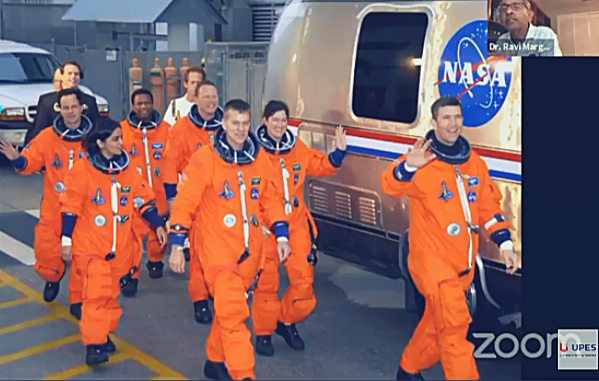
“This is what I want you to do as Aerospace Engineers – create something that nobody has seen before. The Space Shuttle was designed, at least in part, to broaden our knowledge of the universe. It can put 25000 kg of payload in space, launch satellites, repair satellites in space, and build the ISS. No other vehicle can do that. When I came to NASA, I saw this beautiful space shuttle Columbia that would go to space and come back to Earth and land anywhere in the world. It is an amazing feat of engineering,” says Dr. Margasahayam.
A student passionate about engineering can choose from a wide range of careers: Become an astronaut, astronomer, astrophysicist, materials engineer, general systems engineer, uplink systems engineer, planetary scientist, or physicist.
“Whatever you see in this world is a product at the end. And who makes it? Engineers! Innovation comes when you go into the unknown. You map the maze. Open your eyes and look around, observe and see what is not there. Be whatever you want, and be the best at whatever you do,” he says.
Four important lessons for aerospace engineers by Dr. Margasahayam
Heed to lessons learned from failures. Columbia was a foam hit problem; with Challenger, there was an O ring problem. While the proximate cause is technical, the root cause is always human error.
Adopt systems thinking and systems engineering based on rules of practise.
Develop multidisciplinary knowledge and skills. I worked in railroads, mining, helicopters, and commercial airplanes. Never did I know that working with helicopters like gears will help me in NASA later on in the crawler or railroads will help me in the launch pads.
Reflect on and reinforce failures by storytelling.
Fly beyond the sky
“Just like NASA, I want you to have your name as a gold standard. Your imagination is like the highest kite you can fly. It is more important than knowledge. I am an ordinary person in extraordinary space, and it all happened because of engineering,” Dr. Margasahayam signs off.


